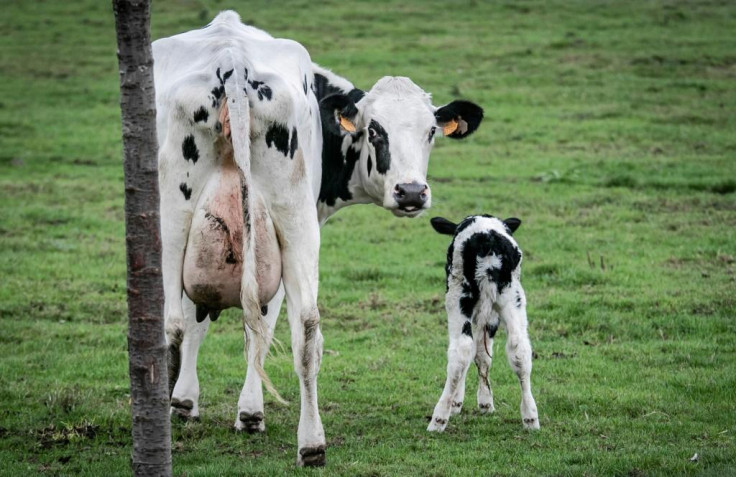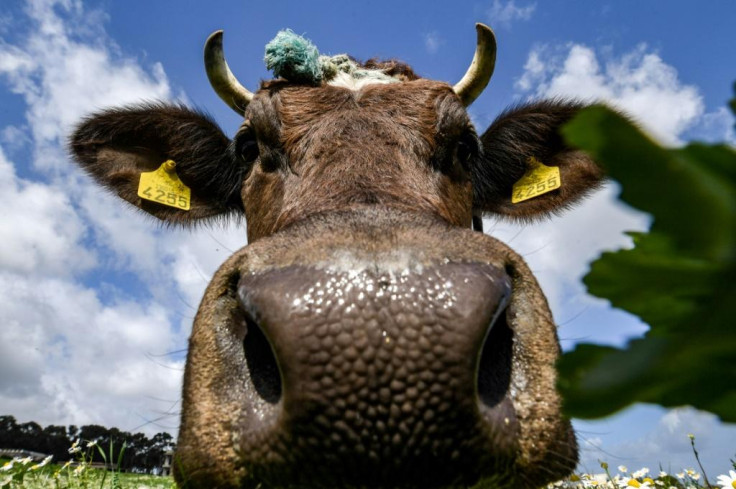Gas giants: Can we stop cows from emitting so much methane?
Agriculture and livestock farming generate around 40 percent of the methane related to human activities
That cow may look peaceful and harmless, munching on some grass in a verdant pasture.
But don't be fooled -- it is emitting methane, a particularly potent greenhouse gas contributing to runaway global climate change.
Agriculture is responsible for 12 percent of global man-made greenhouse gas emissions, much of it due to methane, the second most warming gas after carbon dioxide.
Methane is around 25 times more potent than carbon dioxide as a greenhouse gas over a 100-year period, but it stays in the atmosphere for only 12 years compared to centuries.

So drastically reducing methane emissions could have a major impact in mitigating the damage expected from global warming in the coming decades.
Agriculture and livestock farming generate around 40 percent of the methane related to human activities, the rest produced by the fossil fuel industry.
Much of that methane is produced by the digestive process in cows, which then burp the emissions out into the world.
Around 95 percent of the methane produced by cows come from their mouths or nostrils.
So how can we reduce the danger being belched out by cows across the world every day?

US agricultural giant Cargill, partnering with British start-up ZELP (Zero Emissions Livestock Project), has developed a form of mask that covers cows' nostrils.
The device filters the methane, transforming it into carbon dioxide, which per molecule has a much less potent effect on global warming.
Ghislain Boucher, head of the ruminant team at Cargill's animal nutrition subsidiary Provimi, said the first results were "interesting".
"Methane emissions have been reduced by half," he told AFP.
However the device still needs to be tested in real-world conditions before it can be marketed late next year -- or even in 2023.
In the short term, Cargill is starting to market in northern Europe a calcium nitrate food additive, saying that 200 grammes daily would reduce cow methane emissions by 10 percent.
The additional cost is estimated to be "between 10 and 15 cents per cow per day," Boucher said at a breeding gathering in central France.
Adding red seaweed to cow feed has far more potential, according to a US study published earlier this year, which indicated it could reduce methane emissions by more than 80 percent.
If the results can be repeated, red seaweed would need to grown in vast quantities, preferably near farming areas, the researchers at University of California Davis said.
However a question looms over the issue: how will farmers react to paying more for such measures which do not add to their bottom line, unless they are reimbursed via some kind of carbon credit?
It is also uncertain how consumers will respond. For example, will Americans who prefer corn-fed beef be as partial to the seaweed-fed variety?
And perhaps the easiest way to reduce cow methane emissions is for the world to eat less beef and diary.
A report by the United Nations Environment Programme in May pointed out that technological measures have a "limited potential to address" methane emissions from the agriculture sector.
"Three behavioural changes, reducing food waste and loss, improving livestock management, and the adoption of healthy diets (vegetarian or with a lower meat and dairy content) could reduce methane emissions by 65-80 million tonnes a year over the next few decades," it said.
Copyright AFP. All rights reserved.
This article is copyrighted by International Business Times, the business news leader





















